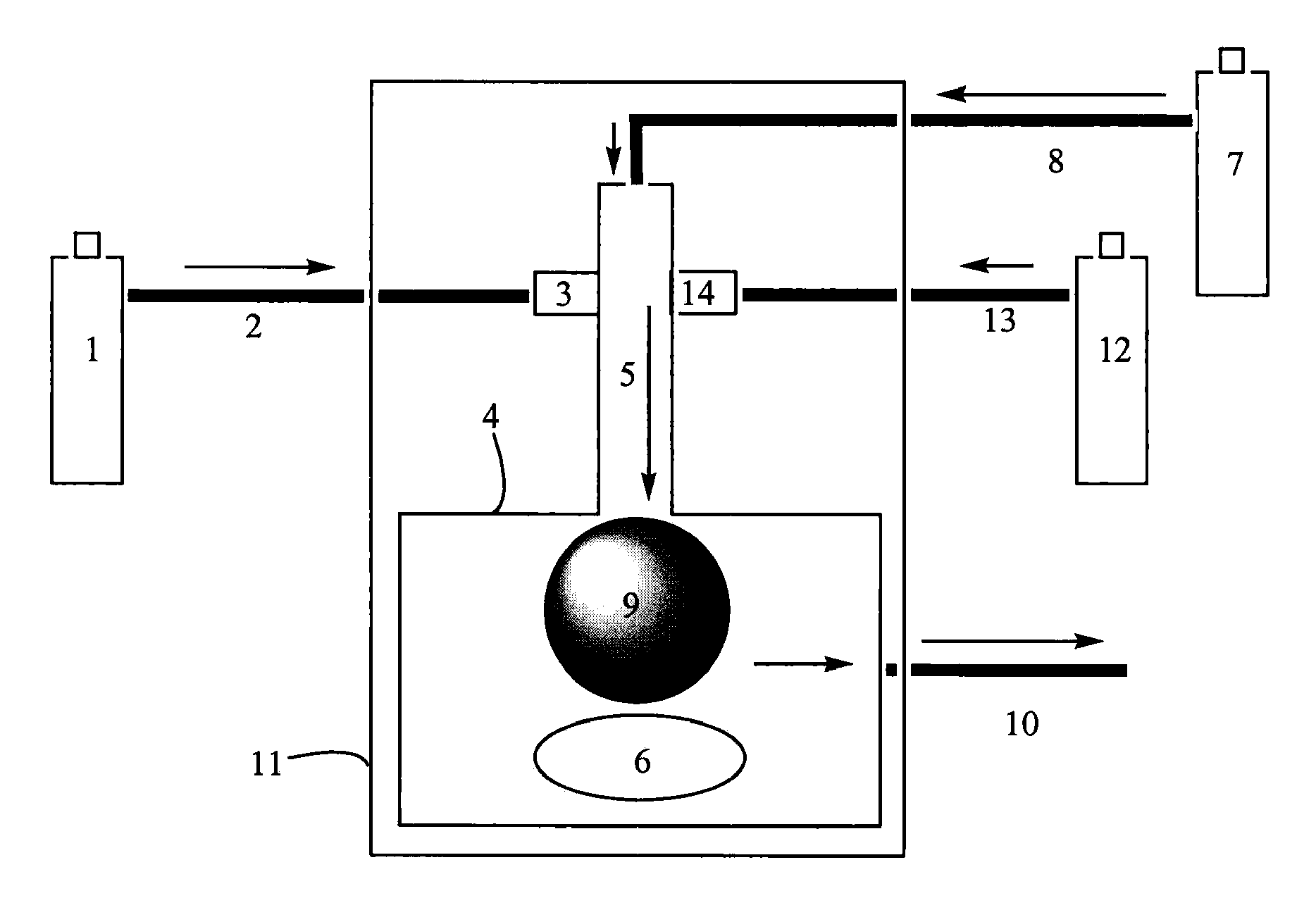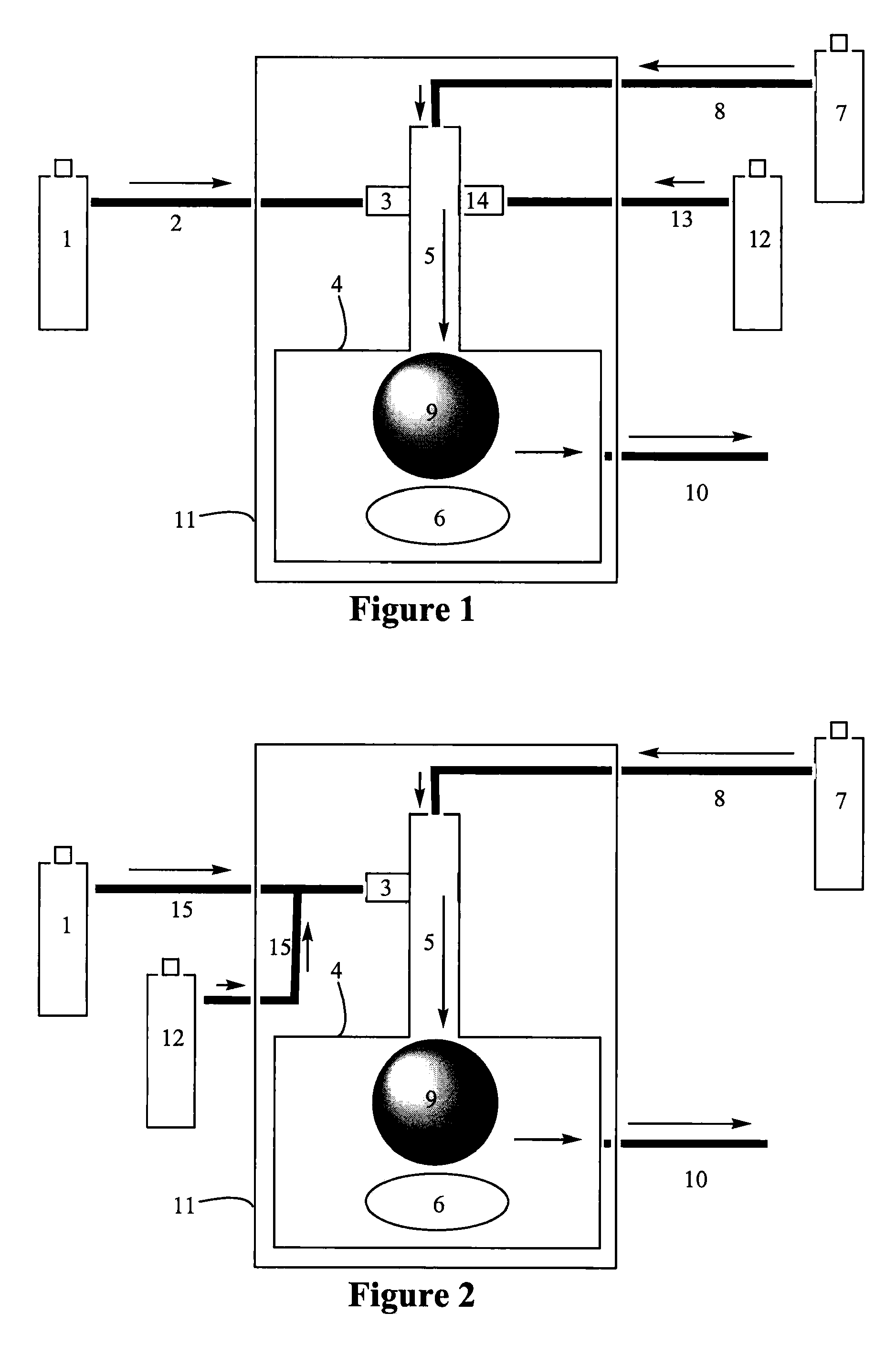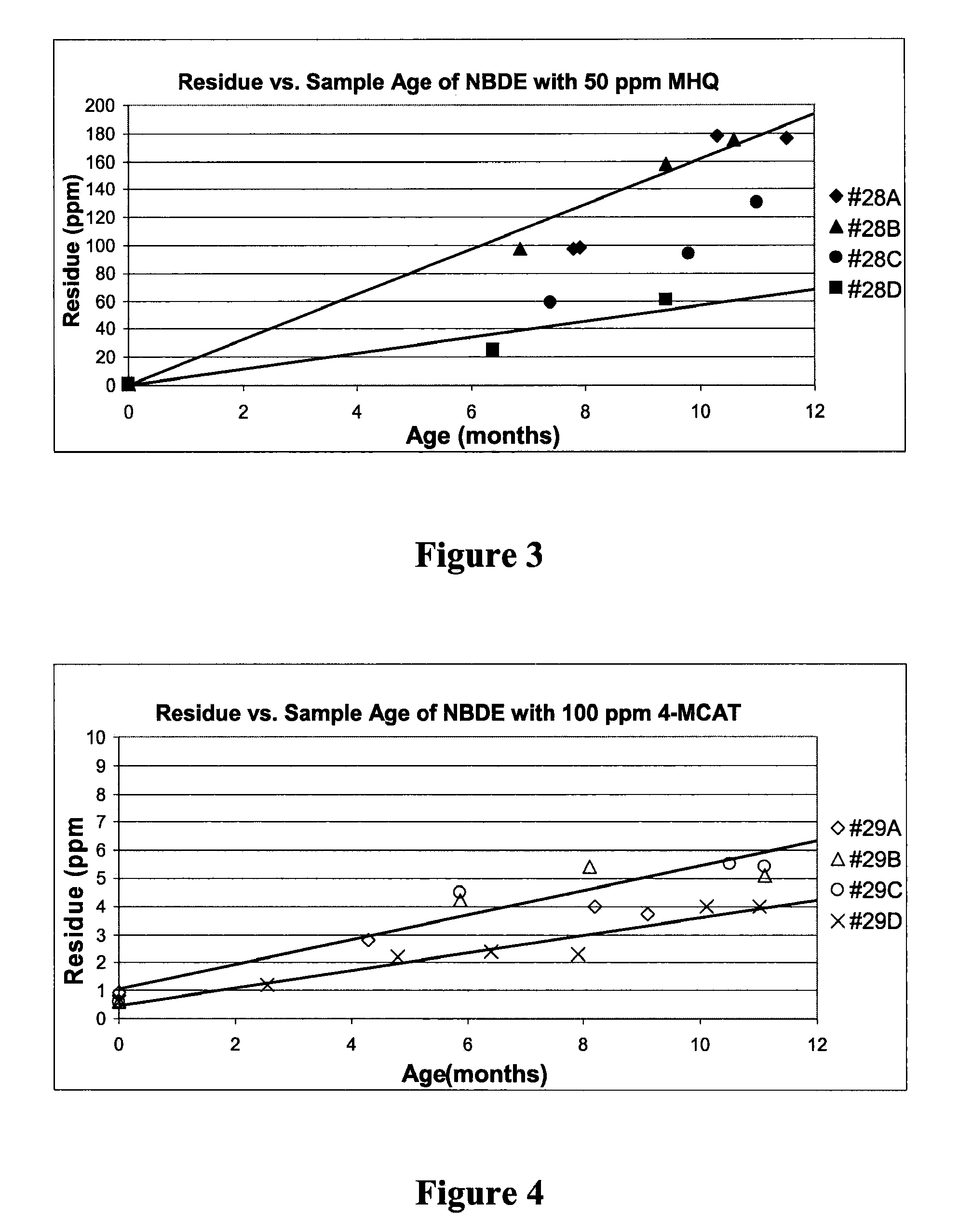Additives to Prevent Degradation of Cyclic Alkene Derivatives
- Summary
- Abstract
- Description
- Claims
- Application Information
AI Technical Summary
Benefits of technology
Problems solved by technology
Method used
Image
Examples
example 1
[0082]This test was chosen to demonstrate how NBDE performs when exposed to heat for a period of time. As mentioned previously, NBDE may be exposed to elevated temperatures up to 80° C. for hours or days, so the product must demonstrate resistance to thermal degradation under such conditions.
[0083]Additionally, this test can give an initial indication of product shelf life. Accelerated aging tests commonly assume that chemical reactions follow the Arrhenius reaction rate function. Generally, this states that degradation rates increase 2× with every 10° C. increase in temperature. Therefore, a heating test at 80° C. for 8.1 days is approximately equal to a sample stored at 25° C. for 365 days. For the above test, 80° C. for 12 hours is approximately equal to a sample stored at 25° C. for 3 weeks.
[0084]The stabilizers tested were MHQ and 4-MCAT, and each was tested at two different concentrations to determine if a higher concentration was more effective. The initial residue concentrat...
example 2
[0086]This test was chosen to demonstrate how NBDE performs when exposed to both heat and oxygen for certain lengths of time. The oxygen concentration used for this test was 25 ppm by weight. This concentration is similar to what one would expect from an accidental exposure of chemical to air during packaging, though it is a relatively large exposure considering the lengths usually taken by chemical manufacturers to avoid oxygen contamination when preparing semiconductor grade products.
[0087]The stabilizers tested were MHQ and 4-MCAT, and each was tested at two different concentrations to determine if a higher concentration was more effective. The initial residue concentration for each sample was measured to determine the baseline prior to heating. The baselines were 31 ppm for unstabilized NBDE (Sample 6), lower than 2 ppm for Samples 7-8 were, and lower than 0.5 ppm for Samples 9-10. Once the baseline was established, sample bulbs were filled in the presence of a known quantity of...
example 3
[0089]This test was chosen as an extreme condition to stress the product and help sort out the effectiveness of different stabilizers. Oxygen was added at 150 ppm by weight as a way to stress the product and demonstrate clear differences between more and less effective stabilizers.
[0090]The stabilizers tested are as follows: 4-methoxyphenol (MHQ), 2,6-di-tert-butyl-4-methylphenol (BHT), 2,6-di-tert-butyl-4-methoxyphenol (BHA), 3-methoxy-1,2-dihydroxybenzene (3-MOCAT), 4-methyl-1,2-dihydroxybenzene (4-MCAT) and 1,2-dihydroxybenzene (pyrocatechol). The first three stabilizers have a single OH substituent (monohydroxy) while the last three have two OH substituents (dihydroxy). The initial residue concentration for each sample was measured to determine the baseline prior to heating. The baselines were 31 ppm for unstabilized NBDE (Sample 11) and lower than 2 ppm for Samples 12-17. Once the baseline was established, sample bulbs were filled in the presence of a known quantity of air to g...
PUM
| Property | Measurement | Unit |
|---|---|---|
| Temperature | aaaaa | aaaaa |
| Fraction | aaaaa | aaaaa |
| Fraction | aaaaa | aaaaa |
Abstract
Description
Claims
Application Information
 Login to View More
Login to View More - R&D
- Intellectual Property
- Life Sciences
- Materials
- Tech Scout
- Unparalleled Data Quality
- Higher Quality Content
- 60% Fewer Hallucinations
Browse by: Latest US Patents, China's latest patents, Technical Efficacy Thesaurus, Application Domain, Technology Topic, Popular Technical Reports.
© 2025 PatSnap. All rights reserved.Legal|Privacy policy|Modern Slavery Act Transparency Statement|Sitemap|About US| Contact US: help@patsnap.com



